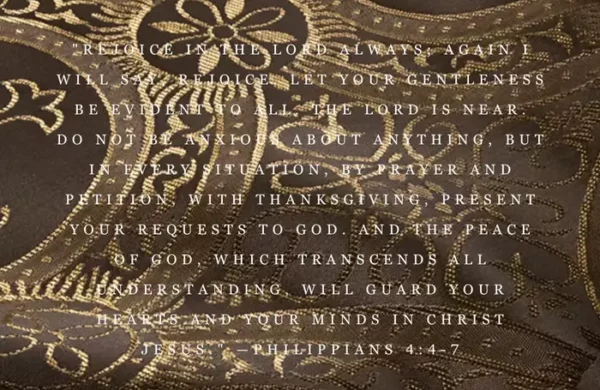
Our company offers affordable solutions for congregations to prepare for Advent, Christmas, and Lent, including a vestment pattern library, custom work options, and budget-friendly fabrics like the beginner-friendly Fleury Brocade. We encourage DIY projects and provide discounts for VIP members.
Like this:
Like Loading...
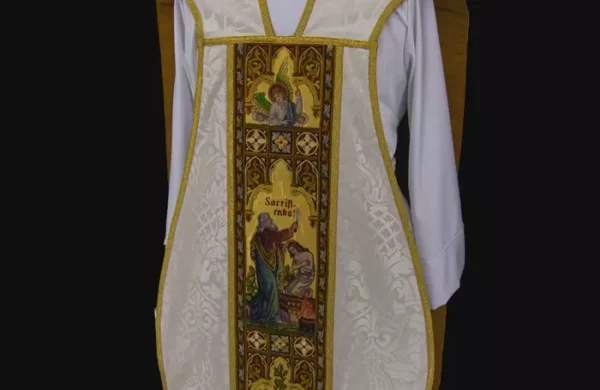
The fiddleback chasuble is a Roman Catholic liturgical vestment known for its narrow, violin-shaped design, differing from the fuller Gothic chasuble. It emerged in the 16th and 17th centuries, gaining popularity for its practicality and ornate appearance, particularly in traditional Masses. The name “fiddleback” reflects its resemblance to a violin’s back, and the word “chasuble” originates from the Latin term for “little house,” highlighting its protective, enveloping nature.
Like this:
Like Loading...
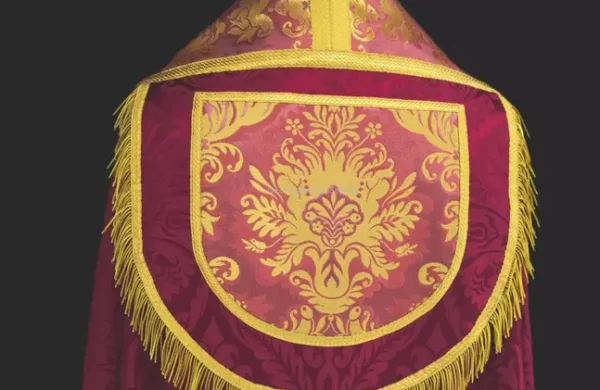
Explores the rich history and symbolism of the liturgical garment worn by clergy in Christian traditions. From its origins in ancient Rome to its evolution as a symbol of solemnity and celebration in modern worship, this article delves into the significance of the cope and its role in religious ceremonies.
Like this:
Like Loading...
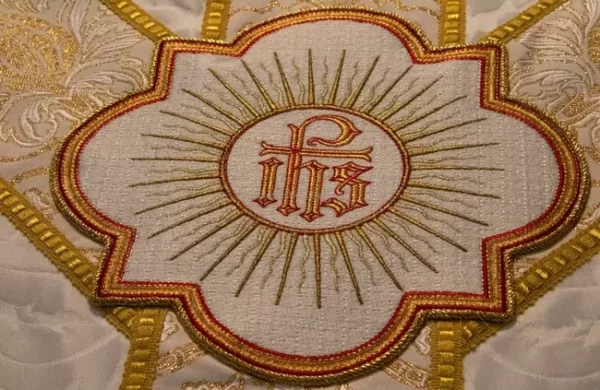
In Luke 18:1-8, Jesus tells a parable about a persistent widow seeking justice from an unjust judge. He uses this story to encourage his disciples to always pray and not lose heart, showing that persistent prayer leads to trust in God’s eventual response, even if it differs from our expectations.
Like this:
Like Loading...
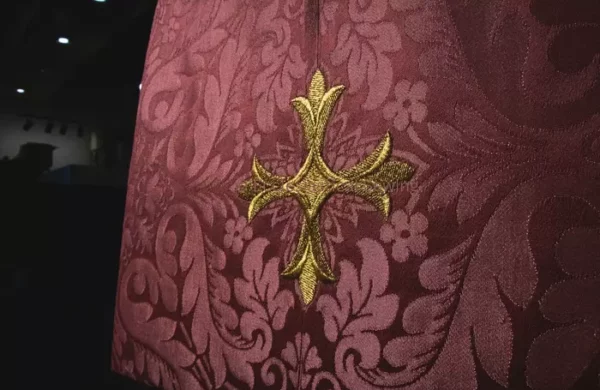
The Fleury Cross, with its fleur-de-lis ends, blends religious and royal symbolism, originating in medieval France. It gained prominence in heraldry, associated with French kings and chivalric orders, symbolizing Christianity and divine right to rule. Today, it holds significance in both religious and secular contexts, found in logos, institutions, and churches.
Like this:
Like Loading...
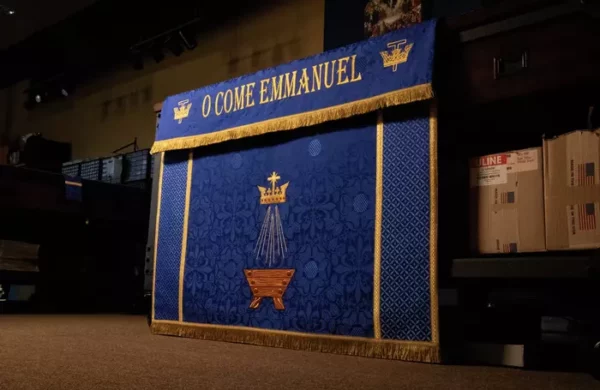
Choosing church vestments should prioritize quality over convenience. Mass-produced options from platforms like Amazon often use cheap materials and are made under poor labor conditions, resulting in inferior products. In contrast, handcrafted vestments from Ecclesiastical Sewing are made-to-order with high-quality European brocade by skilled U.S. artisans. These durable vestments reflect the reverence owed to sacred spaces and the liturgical arts.
Like this:
Like Loading...
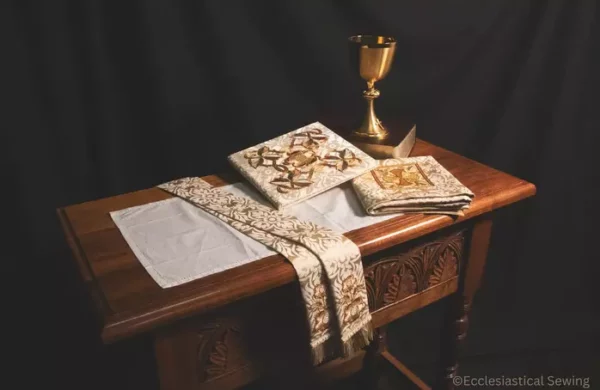
Ecclesiastes teaches us about life’s uncertainties and the need to act wisely. It advises enjoying life’s pleasures, making smart decisions, and trusting in God’s plan. The passage warns against chasing empty pleasures and encourages living with purpose and trust.
Like this:
Like Loading...
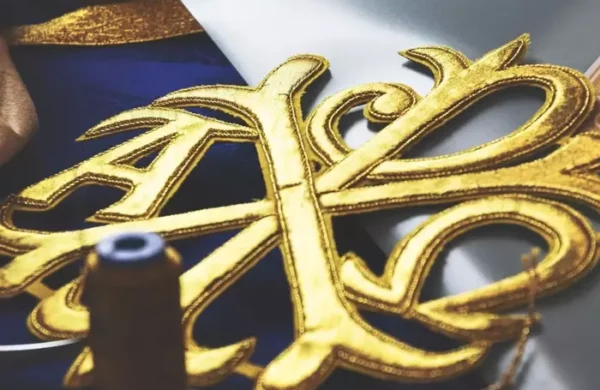
Discover the liturgical elegance of our curated collection of appliques, designed to revitalize the beauty of sacred spaces. We’re dedicated to supporting the DIY community and empowering creative partners with a range of options to suit every project and budget. Join us in restoring timeless beauty to liturgical vestments and sacred spaces.
Like this:
Like Loading...
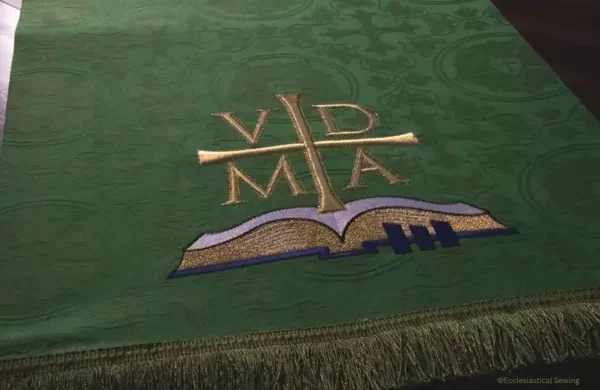
Ecclesiastes 3 reminds us that life has its own rhythm, encompassing various seasons of joy, sorrow, growth, and challenges. It teaches us to accept the natural flow of life and find balance in its contrasting threads. Through it all, God’s presence remains constant, guiding us and making everything beautiful in its time. Each season has its purpose, encouraging us to cherish every moment and find joy and meaning in our journey.
Like this:
Like Loading...
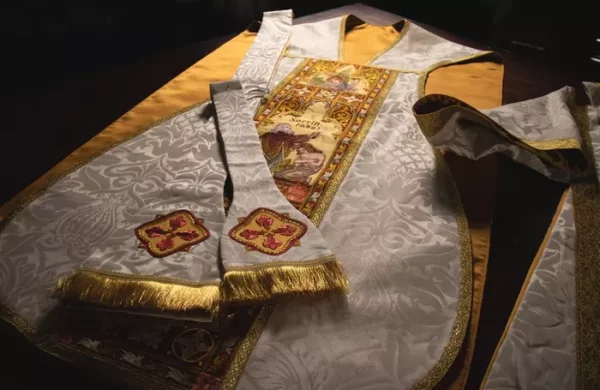
Our company aims to transform church worship by reviving high-quality, traditional vestments. Rejecting low-grade, mass-produced alternatives, we honor centuries of craftsmanship with detailed, meaningful designs. While we can’t serve every church, we strive for excellence and need your help to spread the word. Share our mission and support us in preserving the art of church vestments.
Like this:
Like Loading...
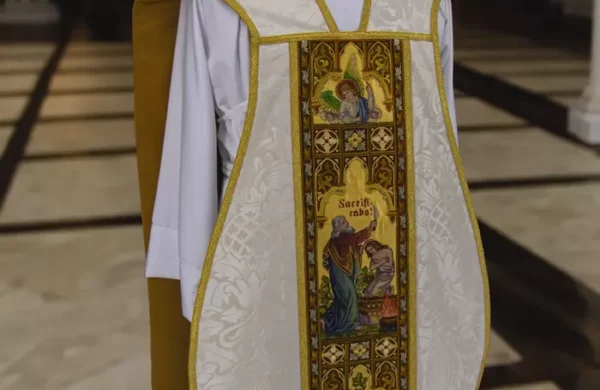
Reviving a century-old Roman fiddleback chasuble, this restoration project breathes new life into a hand-embroidered liturgical treasure. Featuring our Ivory Fairford fabric, the set includes a matching dalmatic, deacon stole, maniples, and regular stole in the traditional spade-end style.
Like this:
Like Loading...
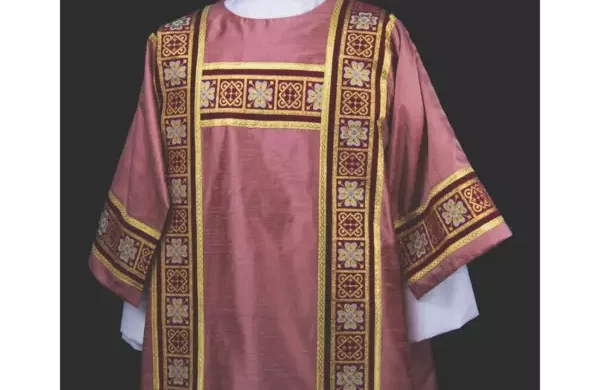
The deacon’s dalmatic, a liturgical vestment, is worn by deacons during ceremonies in various Christian denominations. Originating from ancient Roman attire, it became a symbol of diaconal ordination in the Christian church by the 5th century. Today, it is worn during Mass and solemn liturgies, with its color varying based on the liturgical season or feast day.
Like this:
Like Loading...
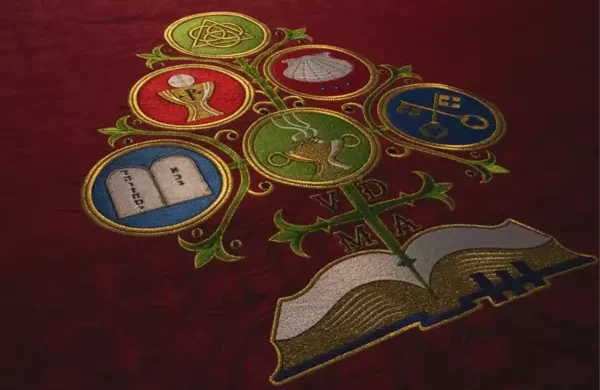
The Parable of the Good Samaritan, found in Luke 10:25-37, tells the story of a man who is robbed and left for dead on the roadside. Both a priest and a Levite pass by without helping, but a Samaritan stops to assist him. The Samaritan tends to the man’s wounds, takes him to an inn, and pays for his care. Jesus concludes the parable by highlighting the Samaritan’s compassion and instructs his listeners to emulate his example by showing mercy to others. This parable teaches the importance of kindness and compassion toward everyone, regardless of differences, emphasizing the universal value of caring for those in need.
Like this:
Like Loading...
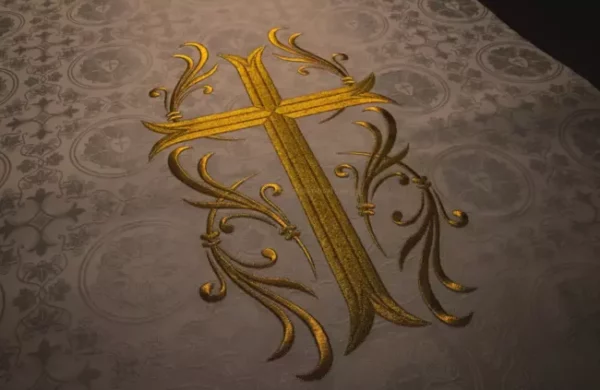
Our studio creates beautiful banners for your church, each one carefully crafted with top-quality materials and skilled hands. These banners aren’t just decorations – they’re works of art designed to inspire and leave a lasting legacy for your community.
Like this:
Like Loading...
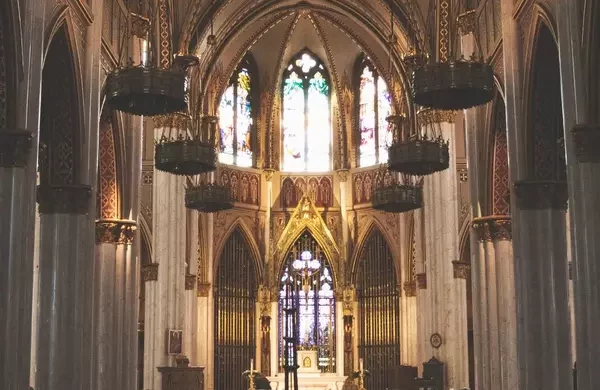
Explore the legacy of stained glass artisan F.X. Zettler, for his mastery of the Munich Style. From award-winning windows to technological innovations, Zettler’s influence extended globally, shaping the market for Catholic church windows. While rooted in tradition, his company’s contemporary projects reflect a departure from the Munich Style, exploring modernistic designs for diverse venues.
Like this:
Like Loading...
















You must be logged in to post a comment.